The National Trust has acknowledged that, despite previously stating that drones cannot be flown over its properties, it does not have the authority to enforce such a ban on flights over its land.
This admission follows a Freedom of Information (FOI) request, revealing that while the Trust can restrict drone takeoffs and landings on its property, it has no control over the airspace above, which is regulated by the Civil Aviation Authority (CAA).
In its response to the FOI request, the National Trust explained:
“National Trust doesn’t permit drone operation from our places for a variety of reasons, including visitor and staff safety, potential disturbance to visitors and residents, and disturbance to wildlife and livestock. National Trust land is not classed as a public park, but rather is privately owned land, held in trust by us for the nation. As the landowner, National Trust can stipulate which activities we permit on our land but have no control over access to airspace for those flying from outside of our ownership.“
The Trust further outlined how it manages drone operations from its land:
“In instances where members of the public are operating drones from our land, our policy is to remind the flyer that they are acting in contravention to our policy and the conditions of access to our land, and politely ask them to cease flying.”
Despite this clear admission, parts of the National Trust’s website still inaccurately state, “We do not allow drone flying from or over National Trust land,” giving the impression of a blanket ban on drone flights over Trust-owned properties.
In contrast, other sections of their website more accurately acknowledge that while the Trust has the right to prohibit drone takeoffs and landings on its property, it cannot enforce a restriction on flights originating from public land.
This contradictory messaging has caused confusion among drone operators. Drones are increasingly used for photography, mapping, and surveying in scenic areas, many of which are under the care of the National Trust.
The Trust’s response also highlights the additional complications posed by national regulations, stating that:
“It should be noted that in some instances, other regulations and restrictions on drone flying that are beyond our control will apply to land owned by National Trust, for example, CAA-enforced airspace restrictions and restrictions on flying in and over Sites of Special Scientific Interest, which are regulated by Natural England.”
In practice, the Trust is likely to request that drone operators stop flying from its properties if they are caught in the act, but it cannot prevent flights over its land if the drones are launched from outside its ownership.
In short, the National Trust admit that it cannot legally stop drone flights over its land because, while it owns the land itself, it does not own the airspace above it. Airspace in the UK is regulated by the Civil Aviation Authority (CAA), which governs the operation of unmanned aerial vehicles (UAVs) regardless of the land ownership below. This means that individuals can legally fly drones from public spaces adjacent to National Trust properties if they comply with existing aviation regulations, such as altitude limits and no-fly zones. As a result, the Trust can only enforce its policies regarding drone takeoffs and landings on its land.
Still, it cannot prevent drone operators from flying over its properties if they launch outside its jurisdiction.
Just because you can doesn’t mean you always should
Responsible drone flying around historic sites helps to:
- Preserve the integrity of the sites: By flying with caution, drone operators can minimise the risk of accidentally causing damage to the monuments or structures. Even minor damage can have long-lasting consequences for these sites, potentially undermining their stability or historical value.
- Ensure visitor safety: Many historic sites are popular tourist attractions, and careless drone flying could pose a risk to the safety of visitors. By adhering to the CAA’s regulations and guidelines, drone operators can help ensure a safe experience for all visitors to these locations.
- Protect the ambience and experience: Historic sites often provide a unique and peaceful atmosphere for visitors to appreciate and contemplate the past. Excessive or intrusive drone activity can disrupt this experience, detracting from the overall enjoyment of these sites.
- Respect local wildlife: Some historic sites may be home to protected or sensitive species of flora and fauna. Responsible drone flying helps to minimise disturbance to these species and maintain the ecological balance of the area.
Flying drones responsibly around historic sites is essential for preserving their cultural, historical, and ecological value, as well as ensuring the safety and enjoyment of visitors. By adhering to the CAA’s regulations and guidelines, drone operators can contribute to the long-term protection and appreciation of these irreplaceable landmarks.
Believe it or not, while it’s legal to fly over these sites, oftentimes, it’s just best not to.



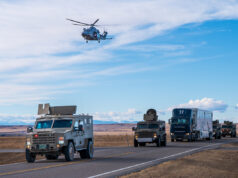

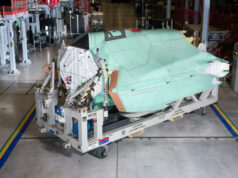


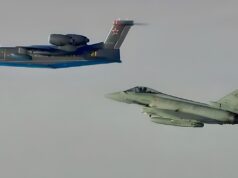
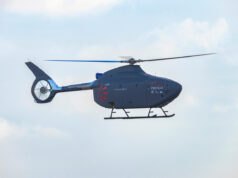
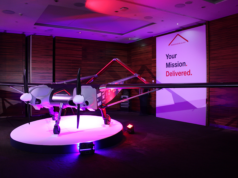



Spot on re CAA’, but , can you chase foxes with Drones?
One would hope that drone operators might recognise that these things are intrusive, annoying and yet another tech irritation in a world that is increasingly difficult to spend time away from it and that people who visit a National Trust property might want a day out that doesn’t involve drone fly overs…but then we do live in an increasingly selfish age where invading other people’s lives in the name of a past time is considered normal and ok.
I’d tend to agree.
It is a few lovely hours where the digital world takes a back seat.
I’d rather they didn’t put so many digitally immersive events into some of their properties…my kids preferred the more old school presentation and reading the text explanations…I’ve heard other kids say the same…oddly when you look it is the adults being immersed!
I understand what you’re saying but it’s not really any different to someone flying a light aircraft over in terms of noise and the like
Eh ? I completely disagree. Theres a whole world of difference not least of which is the infringement of personal privacy die to the closeness of the drone coupled with the fact drones mostly have cameras (or there would be very few flying them).
I really can’t see why they can’t be banned. They aren’t really public spaces as such & theres plenty of more suitable places surely.
Cant edit that… I see what they are saying regards control outside of their jurisdiction/land I suppose …but the rest still stands…mostly a bloody intrusive nuisance.
As an owner of two drones which I use to regularly fly and film over historic monuments I take issue with your comment regarding banning them. Apart from freedom of pursuing a legal hobby flying a sub 250gm zone at 200 feet is not only inaudible but unless you know it is there you will not even see it,. With regard to “cameras†you may not have noticed but 99% of the public own smart phones with cameras and go to any National Trust property and you will see them being used by the dozens – should they be banned?
My reply was specifically to the assertion there was no difference between a drone and a light airplane when quite obviously there is.
Regards you taking issue with banning them I would suggets that depends what you are using them for, and what sort of footage you are taking.
However , again , comparing the usage of camera drone to smart phones is ridiculous and in a similar vein to comparing drones to light aircraft.
World of difference between a light aircraft passing over a location at what is probably a couple 000 feet point to point and someone flying a camera equipped drone a few feet off the ground for the purposes of flying (and filming) in that location. Drones are a great tool, but time and place.
Most drone pilots who want cinematic shots or film will fly their drones during the ‘Golden Hour’ for which most of the public are either still in bed or on their way home from wherever they have visited. For the uneducated that means sunrise or sunset, the light at those times is beautiful and makes photography and filming stand out. Furthermore, most drone pilots, like myself, follow all the regulations and indeed have to pass competence tests to fly them. There are of course ‘ignorant idiots’ who, for reasons best known to themselves, break the Law. Please don’t tarnish all drone pilots with the same brush
Drone flying may not be your hobby, but it is someone else’s hobby and they have the right to pursue it. The governments role is to keep people safe, they’ve done that with very strict drone rules. Most drone fliers follow these rules. National Trust should do the same, but they don’t, they write deceitful policies, try to implement them outside of their land and in public air space, and allow their staff to harass pilots.
English Heritage try to push the same deceitful message. To be claiming authority that one simply doesn’t have is shockingly unprofessional in my judgement.
… [Trackback]
[…] Read More Infos here: ukdefencejournal.org.uk/national-trust-admits-it-cant-ban-drone-flights-over-its-land/ […]
This remains an issue today is because the NT imposed an unenforceable policy on airspace they do not own or control. You cannot just state you can’t fly here or there. This is done only through the Civil Aviation Authority with Restricted Flight Zones because that is the only way to notify pilots that such a restriction exists. Reading the comments from others, there is an obvious distrust of all-things-drone, no doubt fuelled by the bad press drones have received. Despite popular belief that all drones fly at 12 feet peering into windows, nothing could be further from the truth. When drones fly over NT property, they are there to photograph the house, gardens and landscape, not the people. This means for the best cinematic shots, the drone will be off to the side of the house or garden, very high at 300-400 feet, and often out of sight and hearing. Yes, there are still idiots with £75 drones flying around unsafely, but most drone pilots invest thousands into their drones and follow the law. Still, it will not convince those determined to be offended by them.
quite so
Yep, knew their speech was full of holes… just don’t TOAL from their land and you can fly. MOST legal fliers obey and go with the law and there are no issues, however you get the few that want to push the boundaries (such as so called “auditors”) in order to get a reaction… this is what is causing the main issue for the vast majority of sensible drone operators .
However you will always got those fools that think they are above (and beyond) the law!
I am all in favour of flying over their land – preferably with their permission, however they have no say whatsoever if you are not on their land they cant stop you. You may get confrontation from them but just be friendly and polite – dont argue or threaten them – unlike most auditors – none of which I will actually name but add DJ or DJE in front of audits and you will come across two of the UK’s worst drone auditors – one has actually been jailed because of his harassment, the other ran over a child on a bike because he was to busy flying his drone and not watching where he was driving!